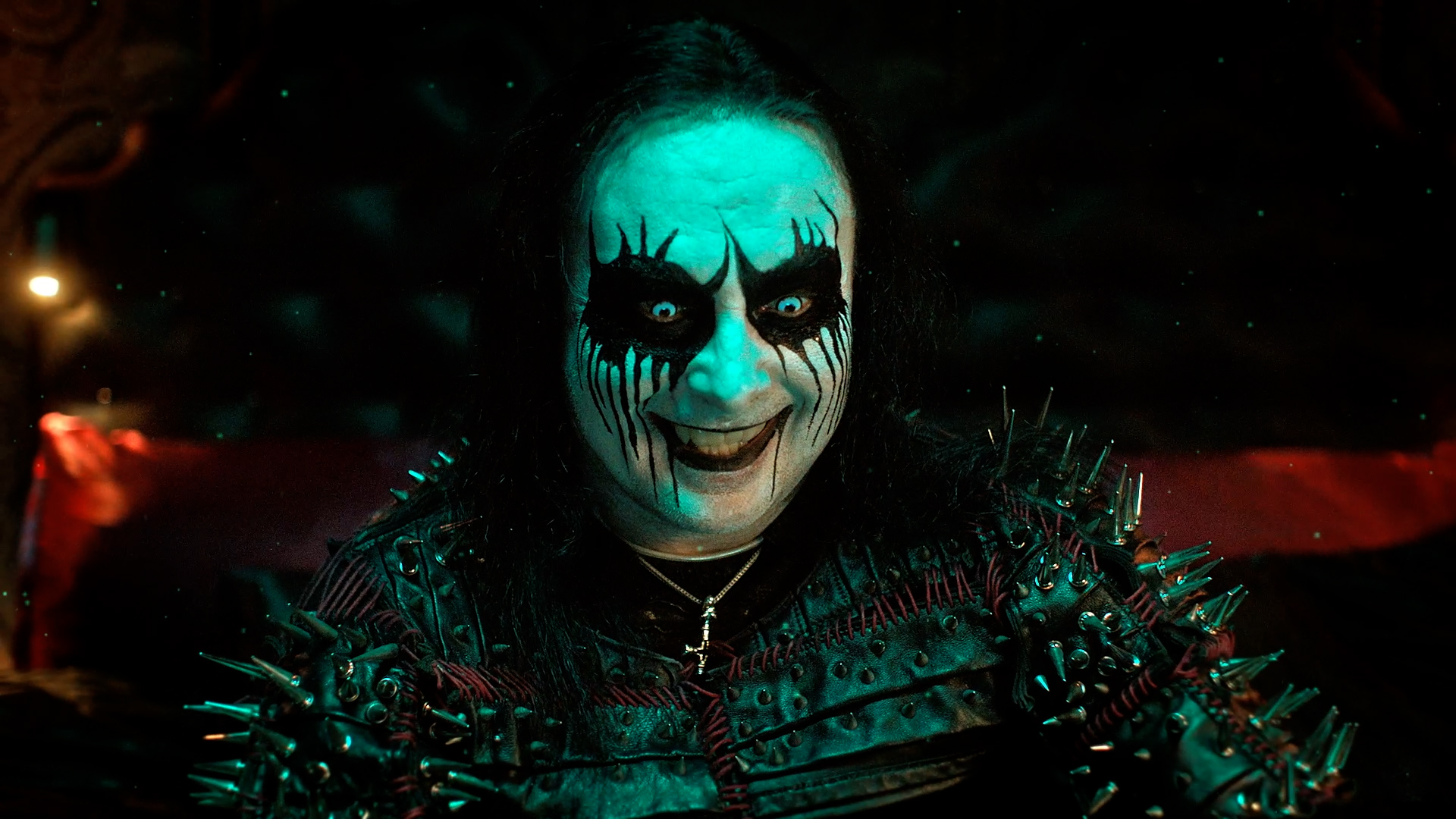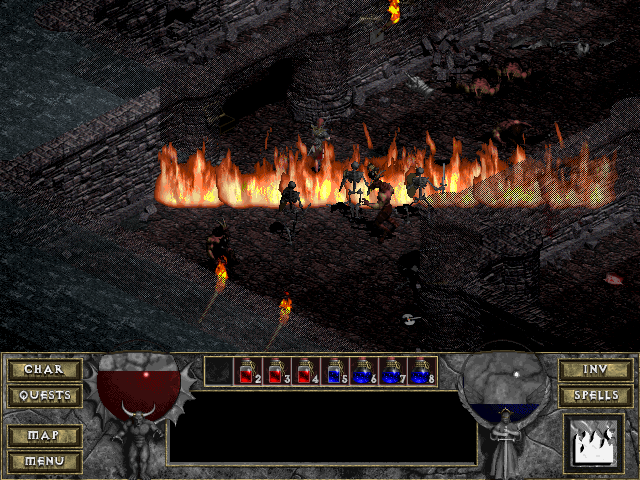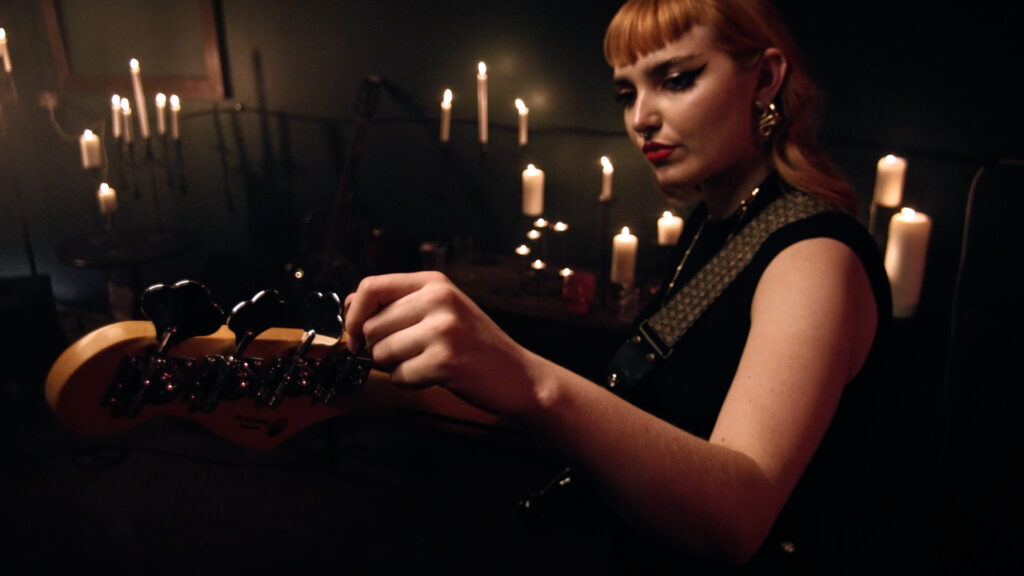Immortal rockers: exploring heavy metal’s relationship with video games
The sounds and aesthetics of heavy metal have influenced films, TV, fashion — and video games. Following the release of the new metal-inspired mobile game ’Diablo Immortal’, Rolling Stone UK explores the genre’s relationship with the gaming medium.
By Emma Wilkes

In partnership with Diablo Immortal
Heavy metal tends to find its way into other parts of art and culture. It’s bled into films (The Crow, the Saw franchise), TV (the latest season of Stranger Things), and fashion (the metal band t-shirts on sale in various high street chains), but one area that the genre has found a particularly natural bedfellow is in the world of video games.
The relationship between heavy metal and video games is a deeply reciprocal one, with one opening the door to deeper explorations within the other. Guitar Hero and Rock Band have been known to give young gamers their first taste of metal’s crushing riffs and abrasive vocals, while on the flipside, games like Blizzard Entertainment’s Diablo series — including the new Diablo Immortal, available now on mobile — have lured metalheads into their immersive virtual worlds with soundtracks either featuring heavyweights of the genre or original scores that draw influence from those bands.
“Blizzard has metal fandom in our DNA,” explains the company’s Ryan Quinn, a narrative developer who worked on the game’s latest iteration, Diablo Immortal. “I showed up here in the early 2000s, and it was a lot of Pantera shirts and a lot of throwing up horns in the hallway. I think those mutual interests are just common among people who make the games and people who like the games. People want to see themselves in the creative art they consume, and so when you let your interior passions shine, in the case of all the metal references in the Blizzard games, that speaks to people.”

As far back as the early 1980s, the popularity of metal music was colliding with nascent video game technology. In 1982, American rock band and ‘Don’t Stop Believin’ hitmakers Journey released Journey Escape for the Atari 2600, which saw players guide Steve Perry and co through a series of levels, fighting their way past paparazzi, groupies, and promoters in order to get the band to their gig on time. Though hardly the most highbrow or even hi-tech game (it was the eighties, after all), the idea of bringing music and gaming together, giving the fans a way to connect to their favourite band besides just listening to their songs, caught on. Mötley Crüe were one of the first to jump on the trend, lending their name and songs to a pinball game creatively titled Crüe Ball for the Mega Drive in 1992. An Aerosmith rail shooter game called Revolution X hit arcades in 1994, and KISS also used the shooter format for Kiss: Psycho Circus: The Nightmare Child, which was released in 2000 and was based on Todd McFarlane’s Psycho Circus comic book series. Iron Maiden had released their own PC shooter, Ed Hunter, a year earlier, in which players navigated realms based on their famous albums, from the gritty back alleys of London (representing Killers) to the acrid Egyptian deserts (Seventh Son of a Seventh Son).
Today, the idea of bands releasing tie-in video games has become somewhat outdated (save for strange exceptions like Iron Maiden’s Legacy of the Beast in 2016), but actual musicians are still being brought into the gaming fold, albeit in less on-the-nose ways. For the release of the remastered Diablo II last year, Lacuna Coil’s Cristina Scabbia teamed up with YouTuber Mark the Hammer on the song ‘Start Again’, while Diablo Immortal has partnered with Music for Nations to bring three of UK metal’s shining stars on board: gothic metal legends Cradle of Filth, metalcore heroes Bury Tomorrow, and doom punk bright lights Witch Fever.
“If I just look at the elevator pitch for Diablo, it’s killing the devil. What’s more metal than that?”
— Ryan Quinn, narrative developer for Diablo Immortal
But perhaps the biggest ways that games pay homage to heavy metal is thematically. 1996’s Duke Nukem 3D tapped into the ascendant nu-metal culture of the era with its blend of heavy metal and hip-hop, from Megadeth to Coal Chamber to the Wu-Tang Clan. DOOM composer Bobby Prince has cited Metallica, Pantera, Slayer, and Judas Priest as influences on the game’s music, yet the soundtrack still retains a sound inherent to the gaming medium rather than being a pure metal pastiche (relatedly, Nine Inch Nails frontman Trent Reznor arranged several pieces for the soundtrack of DOOM’s spiritual sequel Quake in 1996).
Other video games pulled from metal’s larger-than-life personalities and incorporated them into their narratives. The 1989 Nintendo Famicom platformer Holy Diver featured characters named after Ozzy Osbourne and Ronnie James Dio, while more recently, the 2009 adventure game Brutal Legend boasted the cast of metalheads’ dreams, with Lemmy Kilminster, Rob Halford, Tim Curry, and Ozzy Osbourne all making appearances, and Jack Black voicing the Lemmy-inspired protagonist Eddie Riggs.
The Diablo series has incorporated these influences in more nuanced ways. Even its narrative threads contain the spirit of metal. When writing, Ryan Quinn listens to metal to connect with the characters’ emotions and represent them in the game as authentically as possible. “In Diablo, our stories are mostly about very, very desperate people behaving desperately — someone’s hearing voices, someone’s insanely jealous, someone’s being possessed by a demon,” says Quinn. “Lots of metal records are about coping with existential horror, body horror, dying young, feeling distant, or alienated from your society. Music becomes a really powerful shortcut to get you in that headspace.”

Quinn’s words scratch the surface of the huge thematic overlap between heavy metal and video games. There’s a mutual fascination in these creative forms with darkness and horror, but also the uncanny, the fantastical, and the macabre. In that sense, it’s no surprise that they would be natural bedfellows. “Diablo as a whole, I think, is all about lore,” enthuses Bury Tomorrow bassist Davyd Winter-Bates. “With any good dungeon crawler, you want to get lost in the fantasy element of it and really believe the world you are playing in. Being able to delve into that world from anywhere on Immortal is wild.”
Of course, the dissonance and aggression of heavy music also does a lot to enhance the gaming experience, particularly for horror games. “Metal’s got a little bit of dissonance in it and relies on sonic elements that a certain number of people are instinctively, genetically uncomfortable with — high volume, clanging metallic noises, double drum fills,” says Quinn. “I think dissonance is really important to horror. It’s really important to do the quiet-loud-quiet-loud thing when you’re building tension.”
“We’re always inspired by horror and religious imagery, so it’s fun to play a game that uses those themes”
— Alisha Yarwood, Witch Fever
This thematic crossover is what Witch Fever found so appealing about the game. “As a band, we’re always inspired by horror and religious imagery, so it’s fun to play a game that uses those themes,” says the band’s Alisha Yarwood. “We also love all the different creatures you fight along the way.”
For the uninitiated, the Diablo games are set in the dark fantasy world of Sanctuary, where the humans living there are locked in a conflict with the demon hordes led by the titular villain. They battle in a world of fire and brimstone, filled with demons with horns and angels holding spikes, burning bodies and blood and guts. “Those would not be out of place on any metal album cover from the 90s to the present day!” says Quinn. It’s a world that would feel metal even if the game wasn’t created by metalheads. “If I just look at the elevator pitch for Diablo, it’s killing the devil. What’s more metal than that?”

This detailed, hellish imagery is part of what made the first two Diablo games, released in 1997 and 2000 respectively, so game-changing. “I think, before Diablo I, there was not nearly as much emphasis on confronting the dark subject or confronting evil head on,” Quinn says. “In Diablo games, you descend somewhere to where evil dwells and you confront it there. You don’t wait for evil to come to you. To me, not only does that fit with the classic metal music video imagery pretty perfectly, but also like, thematically, a certain amount of this style of music is, [about facing] harsh things that can be harsh head on, try to accept them, acknowledge them, or challenge them.”
Dani Filth agrees. “I love the fact that it’s not impossible and that, despite setbacks that may take you a few attempts to slay the ‘end of level’ bosses, it gives you the opportunity to totally redeem your inadequacies through continual play,” he says. “Fortunately this is enhanced by awesome graphics and accompanying mood music they serves to enhance the immersive experience. Plus you can literally — aside from being on flights — play it anywhere on your phone.”
The Diablo legacy has prospered to the present day. The second (and arguably most iconic) game was remastered last year, and free-to-play volume Diablo Immortal, set between Diablo II and III, was released back in June. The fourth instalment in the series will hit shelves next year. Quinn argues that it couldn’t arrive at a better time. “We’re living through a pretty metal time,” he says. “The pandemic has made things feel somewhat apocalyptic. I think we’re only going to get more metal.”
Watch Dani Filth, Witch Fever, and Bury Tomorrow take on the fires of hell in a new film from the Diablo Immortal team. Diablo Immortal is out now for free download via Apple’s App Store and Google’s Play Store, and PC via battle.net. Visit Diablo Immortal’s website for more information and follow their official Twitter account for real-time updates.
